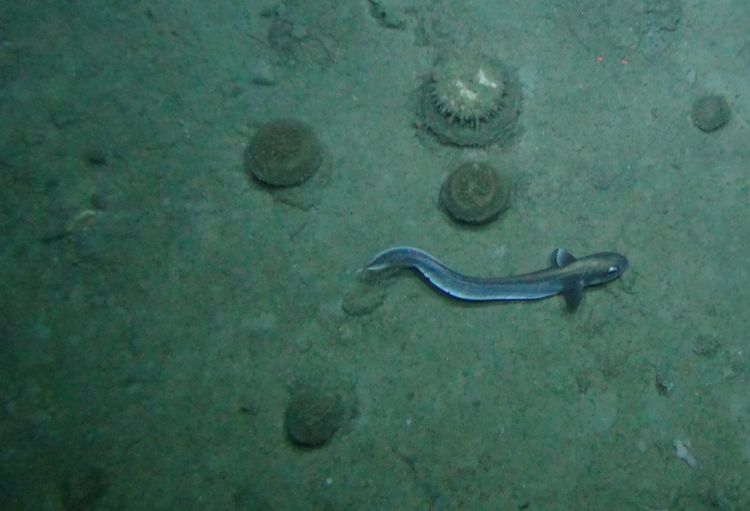Drawing a line under deep-sea fishing: A scientific basis for regulation by depth
Published: 27 August 2015
Data which suggests a benefit to limiting deep-sea trawling in European waters to a depth of 600 metres has been published in the journal Current Biology.
Data which suggests a benefit to limiting deep-sea trawling in European waters to a depth of 600 metres has been published in the journal Current Biology.
The study by researchers at the University of Glasgow and Marine Scotland Science come as the European Council considers controversial new legislation to manage deep-sea fisheries, including a ban on trawling below 600 metres.

Results from the research suggest trawling deeper causes greater damage for a reducing benefit to fishermen.
“The most notable thing to consider about our findings is that the trend in catch composition over the depth range of 600 to 800 meters shows that collateral ecological impacts are significantly increasing while the commercial gain per unit effort is decreasing,” says Joanne Clarke, a PhD student at the University of Glasgow.
Studies have already shown that deep-sea fish species are more vulnerable, due to the fact that individuals tend to live for a long time while having relatively few offspring in comparison to shallow-water species.
Evidence has also shown that deep-sea bottom trawling has taken its toll, with implications for the deep-sea ecosystem and for the climate. Deep-sea fish sequester large amounts of carbon per year.
The question researchers wanted to know was: Should there by a depth limit, and if so, at what depth?
Study authors David Bailey of the University of Glasgow and Francis Neat of Marine Scotland Science came up with a way to find out by looking at changes in catch composition trends with depth.
Data was used from trawl surveys collected between the depths of 240 and 1,500 metres in the northeast Atlantic. Those surveys used different gear types at various locations between 1978 and 2013.
An analysis of the data revealed a clear transition in catches at depths of 600 to 800 metres, including a significant increase in biodiversity, the ratio of discarded to commercial biomass, and the ratio of sharks and rays to commercial biomass. As the ecological impacts increased, the commercial value per unit of effort decreased.
“Depth limitations are often labelled as a ‘blanket’ measure, unsophisticated and poorly thought out,” Clarke says. “In this case, however, it appears that there would be some very specific conservation benefits to a depth limit at around 600 metres.”
The discovery that their evidence backed the latest depth-limit proposal came as a surprise to the researchers.
“We had no prior reason to expect that our findings would suggest an appropriate depth,” Clarke says. “We went into this analysis to test whether any depth appeared particularly suitable for a depth limit, but with no expectation that this would be the case.”
European Council discussions on the matter are expected to begin again in September and, while there are many other factors at play, the researchers say they are “very confident that the work will be brought to the attention of the relevant people and at a critical time.”
Notes to Editors
This study was supported by funding from the EU’s INTERREG IVA Programme managed by the Special EU Programmes Body. The early surveys by SAMS and IOS were supported directly by the Natural Environment Research Council and analysis is contributed to the EU-HERMES program. Later surveys were funded through the Natural Environment Research Council and Marine Scotland Science surveys were funded by the Scottish Government under projects ECOSDEEP, OFFCON, and MOREDEEP.
Media enquiries: stuart.forsyth@glasgow.ac.uk / 0141 330 4831
Related links
- Link to paper in Current Biology, Clarke et al.: “A Scientific Basis for Regulating Deep-Sea Fishing by Depth”
- Dr David Bailey: researcher profile
- Joanne Clarke: researcher profile
First published: 27 August 2015
<< August

